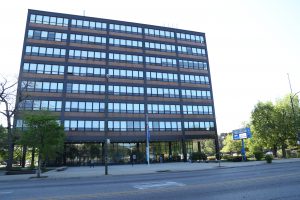About Us

Learn more about what makes RCCA so great!
 The educational institution that is now Roberto Clemente Community Academy originally opened its doors in 1892 as Northwest Division High School, and was known as Tuley High School from 1906 until 1974 when the school was closed due to over-crowding. Staff and students were moved across the street to a new facility named Roberto Clemente High School, commemorating the baseball Hall of Famer. The mission of Roberto Clemente, who died while delivering humanitarian aid, persists in the school’s emphasis on student service projects and dedication to providing supports for students, families, and the larger community. Academically, Clemente has seen steady improvements in recent years, and hopes to benefit from a staff dedicated to making substantial school reform under new leadership. Our freshman on-track and drop-out rates are some of the most successful in the area, and our AP/IB/dual credit enrollment is rising quickly. Students and parents are also attracted to our professional-grade Culinary Arts, Radio/Television Broadcasting facilities and Allied Health, pervasive use
The educational institution that is now Roberto Clemente Community Academy originally opened its doors in 1892 as Northwest Division High School, and was known as Tuley High School from 1906 until 1974 when the school was closed due to over-crowding. Staff and students were moved across the street to a new facility named Roberto Clemente High School, commemorating the baseball Hall of Famer. The mission of Roberto Clemente, who died while delivering humanitarian aid, persists in the school’s emphasis on student service projects and dedication to providing supports for students, families, and the larger community. Academically, Clemente has seen steady improvements in recent years, and hopes to benefit from a staff dedicated to making substantial school reform under new leadership. Our freshman on-track and drop-out rates are some of the most successful in the area, and our AP/IB/dual credit enrollment is rising quickly. Students and parents are also attracted to our professional-grade Culinary Arts, Radio/Television Broadcasting facilities and Allied Health, pervasive use  of technology, wrap-around support services, and successful athletic programs. Important to our neighborhood community, the school also emphasizes opportunities within the arts such as the steel drum band, Winter Concert, and a theater project with the American Theater Company.
of technology, wrap-around support services, and successful athletic programs. Important to our neighborhood community, the school also emphasizes opportunities within the arts such as the steel drum band, Winter Concert, and a theater project with the American Theater Company.
Roberto Clemente Community Academy (RCCA) is located in Chicago’s Humboldt Park community, on the West Side of the city. Historically a Puerto Rican community, Humboldt Park is home to the Puerto Rican Cultural Center (PRCC), Institute of Puerto Rican Arts and Culture (IPRAC), as well as many community agencies and organizations that center around the Puerto Rican experience. Roberto Clemente Community Academy has developed working partnerships with many of these organizations, with the potential for further expansion. The residents of this community have a strong sense of civic duty as evidenced by the many community organizations and human service agencies in the area, and are deeply concerned about the quality of education that students receive. Today, the school population of about 750 students is diverse, including large groups of students of Puerto Rican, Mexican, and African-American descent, as well as students from East European and other Latin American heritages.

